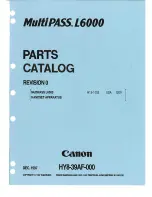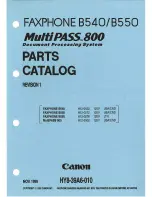
TO THE NEW OWNER
Your new DYNA-FOG
®
applicator represents one of the world’s finest insecticide fog
generators. With reasonable care and maintenance, this machine will provide many hours of
trouble-free service. For best results, this fog generator must be operated and maintained in
compliance with these instructions.
CORRESPONCENCE
In all correspondence concerning the customer’s machine and in ordering parts, the
customer must refer to the model and serial numbers of this machine. This information is found on
the nameplate attached to the machine.
DESCRIPTION
This fog generator employs the resonant pulse principle to generate hot gases flowing at
high velocity. The high velocity gases atomize the formulation instantly so that it is vaporized and
condensed rapidly causing negligible formulation breakdown. The fog particle size is readily
controllable from approximately 0.5 to 50 microns and greater. The smaller particle sizes
correspond to the lower formulation flow rates and the larger particle sizes correspond to the higher
formulation flow rates. This machine is intended for outdoor use and for enclosed spaces with
volumes of more than 500 cubic feet (14 cubic meters). Use in more confined spaces may create a
fire or explosion hazard.
WORKING PRINCIPLE
The engine is essentially a tube with a combustion chamber, an intake valve, and a supply of
combustible mixture of fuel and air. To begin, a negative pressure is created in the fuel tank by
depressing a flexible priming bulb. This draws the fuel into the priming bulb, which is then forced
into the antechamber and combustion chamber, where it is ignited by the spark plug. An explosion
occurs in the combustion chamber driving the gases out the engine tube. The negative pressure
created by the gas flow out the engine tube causes the intake valves to open, allowing more air to
pass through the venture of the carburetor. The air passing through the carburetor aspirates fuel
from the carburetor in a combustible mixture. This mixture is ignited again and the cycle is repeated.
The frequency of repeated explosions is many times per second.
The initial source of ignition is a spark plug powered by an electronic ignition system. After
original ignition, the repeated cycles are sustained by a glow coil which is an integral and
inseparable part of the engine tube assembly. A sample of the pressure pulses from the combustion
chamber is routed to the carburetor where it operates a diaphragm fuel pump within the carburetor
to pump additional fuel from the fuel tank to the carburetor. When the fuel pump operation has
stabilized, further operation of the priming pump is not required.
The exhaust emission of a pulse jet engine is low in pollutant components due to the
following basic design features: The combustion chamber and the length of the discharge (exhaust)
tube attached to it operate at a bright red temperature approximating 1800
○
F., (982
○
C.). In addition,
an amount of air (oxygen) in excess of that required for normal burning of fuel vapor is fed to the engine.
Thus, combustion is quite complete and pollutants formed in other types of engines are actually burned to their
non-pollutant end products in the pulse jet engine.
The formulation remains in the formulation tank under pressure until the formulation valve is opened
.
Then, the formulation is forced from the tank and delivered to the engine tube where it is injected
into the high velocity pulsating flow of hot gases. The formulation is broken into small particles by
the pulsating gases, and then discharged into the atmosphere.
5
Summary of Contents for BLACKHAWK 2620
Page 1: ...MODEL 2620 2630 INSTRUCTION MANUAL FOR OPERATION SERVICE AND MAINTENANCE ...
Page 24: ...24 ...
Page 44: ... 12 86629 ASOV Assembly 12 ...
Page 48: ...Figure 43 43 ...






































